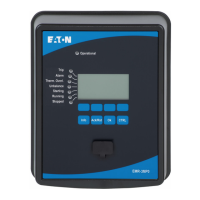Alarm, Timeout Alarm and Trip Principle
RTD[1]...[n]
RTD_E01
2
Please Refer to Diagram: Blockings
(Element is not deactivated and no active blocking signals.)
For each channel [*1]
RTD . Trip
RTD . Invalid
RTD .
Alarm Function
Inactive
Active
RTD .
Trip Function
Inactive
Active
RTD Temperature [*2]
RTD .
Alarm
RTD .
Trip
URTD . Superv [*3]
RTD . Timeout Alarm
RTD . Alarm
RTD .
t-Alarm-Delay
t
0
AND
OR
AND
AND
Fig. 46: The general working principle (delayed alarm, undelayed trip) of each of the RTD sensors.
[*1]
There are the following channel groups: WD1…6, MB1…2, LB1…2, Aux1…2, see ╚═▷
“4.13 Channel Groups”.
[*2] Within each group, always the hottest measured temperature is used.
[*3] The supervision monitors all RTDs that belong to a group.
Collective Alarm, Timeout Alarm and Trip Signals
The RTD sensors are assigned to four groups (depending on the ordered device). These
four groups are OR-connected to the ”AnyGroup“. The AnyGroup generates an alarm, an
timeout alarm and a trip signal if any of the sensors mounted into this issues the
corresponding signal.
183www.eaton.comEMR-3MP0
4 Protective Elements
4.13 26/38/49 – RTD Protection Module

